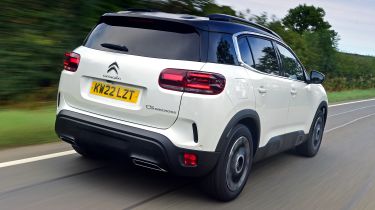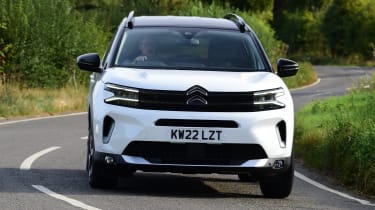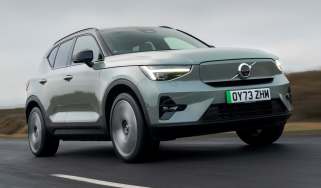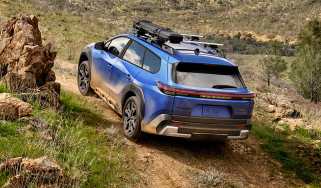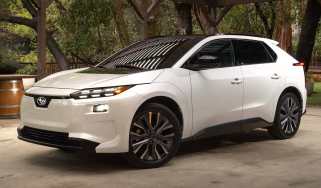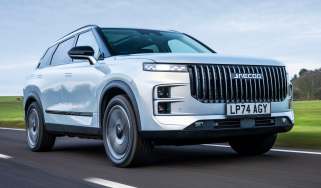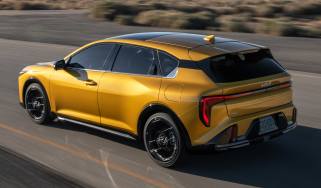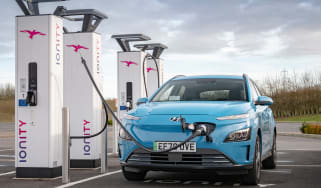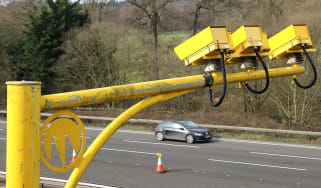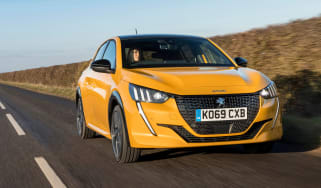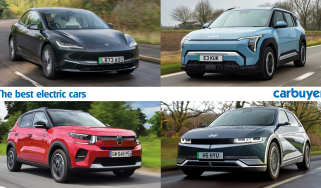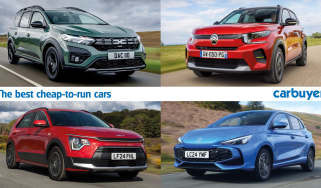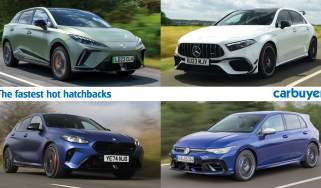Citroen C5 Aircross review - Engines, drive & performance
“C5 Aircross ride quality and driving dynamics are disappointing”
The Citroen C5 Aircross is born from the same mechanical platform as the Peugeot 3008, and the two models share engines and gearboxes. One big difference, however, is Citroen's much-vaunted 'Progressive Hydraulic Cushion' suspension. This takes the place of conventional bump stops that ordinarily limit suspension travel, replacing them with small hydraulic dampers.
When it comes to comfort, which is one of the areas in which Citroen's family flagship was billed to excel, its disappointing performance on bumpy roads is rather unfortunate. It's a real shame that the brand's 'advanced comfort seats' don't particularly impress, either. Although the C5 Aircross’ fancy Progressive Hydraulic suspension irons out most bumps well, it can be unsettled over deeper potholes or wonky speed bumps. When this happens, the cabin can shudder and upset the relaxed atmosphere.
Given that the C5 Aircross is intended to be a comfortable car first and foremost, the ride quality of top versions is a significant disappointment. This lack of smoothness could be overlooked if the driving experience matched that of the best cars to drive in this class, but
Like the Peugeot 3008, the C5 Aircross is front-wheel drive. It may be an SUV, but off-road ability is meagre unless you opt for the 18-inch Mud and Snow tyres. These combine with the optional Grip Control system to give the front wheels a bit more bite on loose or slippery surfaces, but a wet camping field is as far as we'd recommend venturing.
Is it good to drive in town?
Given Citroen's focus on comfort, we’re disappointed with the C5 Aircross’ ride quality, and that will certainly be noticeable on slower pothole-filled roads in town. That aside, the Hybrid 136’s electric motor does a good job of propelling the C5 Aircross quietly at slower speeds, and gear changes are smooth. The turning circle is very tight and the steering is light, which makes the C5 Aircross easily manoeuvrable in town, but makes for an imprecise feeling in other environments.
Is it good to drive on long journeys?
The Citroen C5 Aircross performs better on motorways than around town in terms of ride quality because these tend to be smoother. As motorway driving tends to be more relaxed and gradual, this suits the C5 Aircross best. There’s impressively little road or wind noise to speak of, which makes the C5 Aircross rather serene to cruise along in.
Is it good to drive on B-roads?
Citroen has focused on comfort rather than handling prowess, and that unfortunately rears its ugly head if you drive it sprightly on a B-road. It feels somewhat lethargic in corners and doesn’t really like to be driven quickly. The light steering lacks feel, while the car’s high-riding suspension allows body roll through bends and steering into corners feels vague and imprecise. The seat design may be good for longer journeys, but it comes at the expense of support if you drive the C5 Aircross with any vigour through the corners, so it’s best to take a leisurely approach.
Petrol models
Since its launch, the choice of engines for the C5 Aircross has continued to evolve. Previous petrol versions have since been discontinued in favour of the Hybrid 136 engine with a 1.2-litre petrol engine and electric motor producing 134bhp. It’s only available with an automatic transmission – in fact, all versions of the C5 Aircross are now automatic.
More reviews
In-depth reviews
It’s a pretty quiet engine, which impressed us. Pull away and it’s fairly easy to drive on electric power alone, and Citroen’s claim of up to 50% of urban driving being in zero-emissions mode doesn’t seem too far-fetched. The electric motor helps to smooth gear changes and provide torque at low revs, and the result is a relaxing cruiser that suits the C5 Aircross’s laid-back character.
| Model | Power | 0-62mph | Top speed |
| 1.2-litre Hybrid 136 | 134bhp | 10.2 seconds | 124mph |
Diesel models
The C5 Aircross is also offered with a 128bhp BlueHDi 130 engine that was previously available with a six-speed manual or eight-speed automatic gearbox, but now comes with the latter as standard.
The BlueHDi 130 offers a smooth and mostly refined drive, with the familiar diesel grumble only noticeable at higher speeds. Around town, the shifts of the automatic gearbox are imperceptible when driving gently, but like the petrol version, it can be sluggish to react when you press the accelerator hard to kick down a gear.
| Model | Power | 0-62mph | Top speed |
| 1.5-litre BlueHDi 130 | 129bhp | 10.6 seconds | 117mph |
Plug-in hybrid models
The petrol and diesel have been joined by a petrol-based PHEV that uses a 1.6-litre turbocharged engine, an electric motor and battery pack. Alone, the petrol provides 178bhp but this is bolstered to 222bhp by electric power. All of that power is sent to the front wheels via an eight-speed automatic gearbox.
Acceleration from 0-62mph takes 8.7 seconds, which is competitive, if not neck-straining. The gearbox does a good job of shuffling through ratios most of the time but it can be caught out by sudden stabs of the throttle. Refinement is noteworthy, particularly in electric mode, where double-glazed glass and soundproofing help keep noise out of the interior. Even when the petrol engine does kick in, it's barely noticeable.
| Model | Power | 0-62mph | Top speed |
| 1.6-litre Plug-in Hybrid | 222bhp | 8.2 seconds | 140mph |
Which Is Best?
Cheapest
- Name1.5D Plus 5dr Auto
- Gearbox typeSemi-auto
- RRP£28,110
Most Economical
- Name1.5D Plus 5dr Auto
- Gearbox typeSemi-auto
- RRP£28,110
Fastest
- Name1.2 Hybrid 145 Plus 5dr Auto
- Gearbox typeSemi-auto
- RRP£28,875

